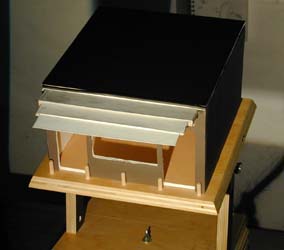
Solar
Geometry:
Solar
Charts
| Terri
Meyer Boake B.E.S. B.Arch. M.Arch. LEED AP Associate Professor School of Architecture University of Waterloo |
 |
Solar
Geometry:
|
![]()
Solar Geometry: Understanding solar geometry is essential in order to be able to design from both a passive as well as sustainable point of view. The sun is able to give us free heating energy in the cold months, but it must be avoided during the hot months to prevent unwanted gain. Control of the sun is also key to achieving successful daylighting strategies as daylight can be used to increase comfort, avoid the use of electric lights and sculpt our architectural forms. |
![]()
| Solar Excerpts from course notes for Arch 125: |
Solar
Charts for 43 degrees north latitude |
| |
| |
A link to a
very cool site that does sun angle calculations: |
The Basics: Horizontal shades work for
the south. North doesn't really need shades, but you do get light in from the north when you get to June 21 as it comes in early in the morning and late in the evening. To keep out HEAT, shades should be on the outside of the envelope. Shades or drapes on the inside will cut down on glare, but the heat has already entered the building. |
|
|
|
| Sun
chart for 28 degrees North. |
Sun
chart for 32 degrees North. |
|
|
|
| Sun
chart for 36 degrees North. |
Sun
chart for 40 degrees North. |
|
|
|
| Sun
chart for 44 degrees North (Waterloo is 43 degrees...) |
Sun
chart for 48 degrees North. |
![]()
last updated January 28, 2010